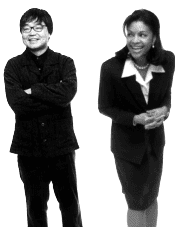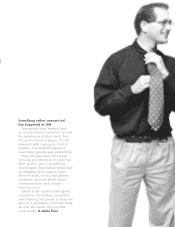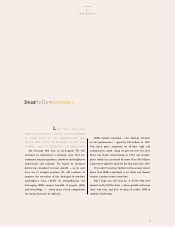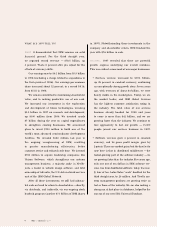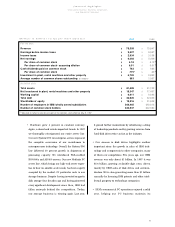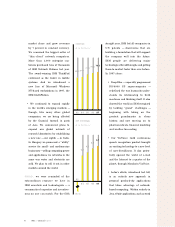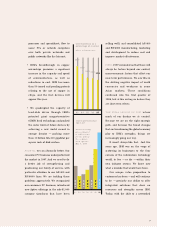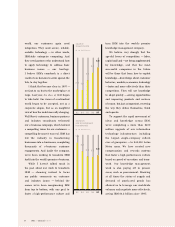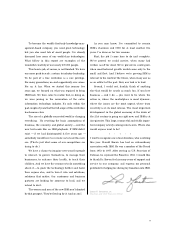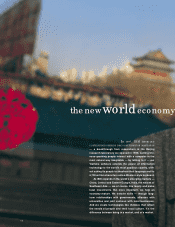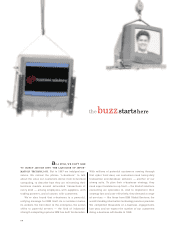IBM 1997 Annual Report Download - page 6
Download and view the complete annual report
Please find page 6 of the 1997 IBM annual report below. You can navigate through the pages in the report by either clicking on the pages listed below, or by using the keyword search tool below to find specific information within the annual report.
WHAT DID 1997 TELL US?
FIRST, it demonstrated that IBM remains on solid
financial ground. For the third straight year,
we reported record revenue — $78.5 billion, up
3 percent. That’s 8percent after you adjust for the
effects of currency shifts.
Our earnings rose to $6.1 billion from $5.9 billion
in 1996 (excluding a charge related to acquisitions in
the first quarter of 1996). Our earnings per common
share increased about 12 percent, to a record $6.18,
from $5.53 in 1996.
We remain committed to maximizing shareholder
value, and to making productive use of our cash.
We increased our investment in the exploration
and development of future technologies, investing
$5.5 billion in 1997 on research and development,
up $300 million from 1996. We invested nearly
$7 billion during the year on capital expenditures
to strengthen existing businesses. We announced
plans to invest $700 million to build one of the
world’s most advanced semiconductor development
facilities. We invested $663 million last year in
the ongoing reengineering of IBM, resulting
in greater manufacturing efficiencies, better
customer service and reduced cycle time. We invested
$700 million to acquire leadership companies like
Unison Software, which strengthens our systems
management business, a majority stake in NetOb-
jects, a leader in website design software, and total
ownership of Advantis, the U.S. data network services
unit of the IBM Global Network.
After all these investments, we still had substan-
tial cash on hand to return to shareholders — directly,
via dividends, and indirectly, via our ongoing stock
buyback program (another $7.1 billion of IBM shares
in 1997). Notwithstanding these investments in the
company and shareholder return, IBM finished the
year with $7.6 billion in cash.
SECOND, 1997 revealed that there are powerful
growth engines underlying our overall numbers.
This was evident across most of our major businesses:
•Services revenue increased to $19.3 billion,
up 28 percent in constant currency, continuing
an exceptionally strong growth story. Seven years
ago, with revenues of about $4 billion, we were
barely visible in the marketplace. Today, we are
the market leader, and IBM Global Services
has the highest customer satisfaction rating in
the industry. The total value of our services
business already booked for 1998 and years
to come is more than $42 billion, and we are
growing faster than the industry. We continue to
hire aggressively to fuel our growth — 15,000
people joined our services business in 1997.
•S
oftware revenue grew 4 percent in constant
currency, and its gross profit margin grew by
2 points. These are modest gains, but the key fact to
note here is that in distributed middleware — the
fastest-growing part of the software industry — we
are growing faster than the industry. Five years ago,
only one out of ten dollars in IBM software rev-
enue was from distributed software; today, it’s near-
ly four of ten. Lotus Notes “ seats” doubled for the
third straight year, to 20 million. And Tivoli’s sys-
tems management products are growing twice as
fast as those of the industry. We are also making a
strong run at first place in databases, helped by the
success of our new DB2 Universal Database.
4IBM1997annualreport


